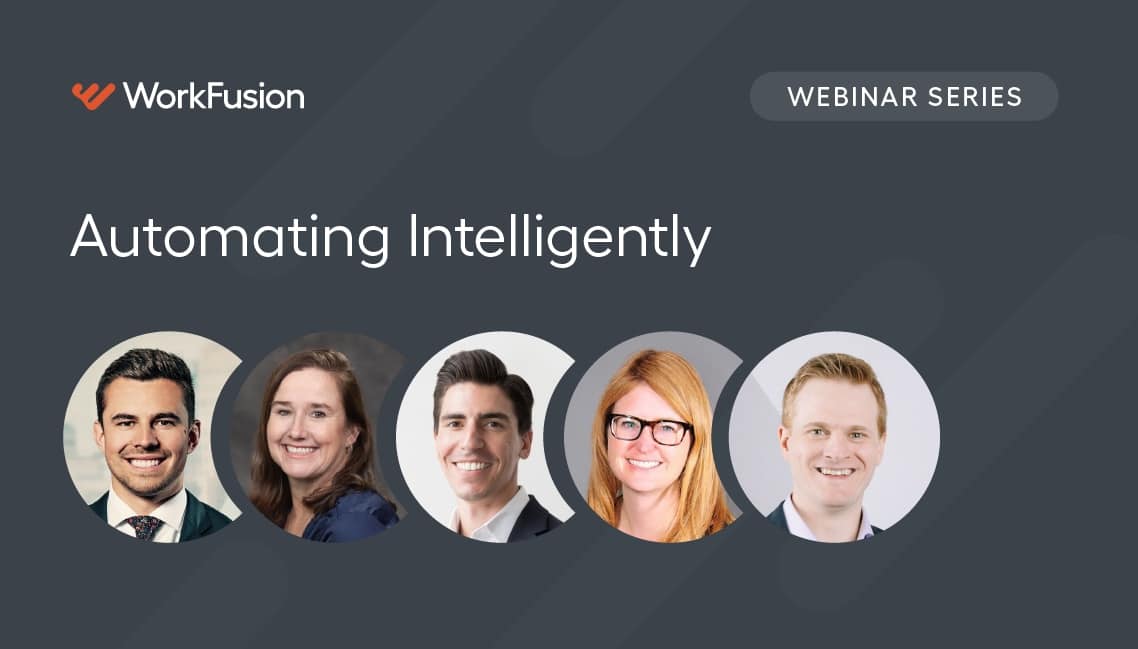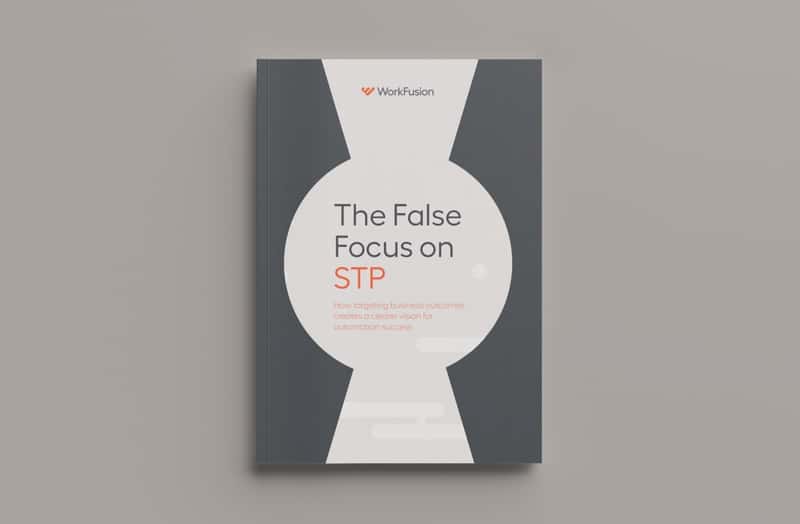We enjoy inviting our peers to discuss and compare notes on industry-related matters. At the same time, our own internal expertise makes for a rich conversation on automation. That’s why we created the Automating Intelligently webinar series.
We started with a discussion on Intelligent Document Processing (IDP).
During this virtual meeting, Kyle Hoback, Janet Joyce, and Ryan Buttacavoli share their opinions and insights on IDP and why it’s crucial to integrate into a workflow.
Topics focus on Customer Lifecycle Management in banking with customer due diligence, email communications, and news articles as key areas where manual paperwork prevails; and customer success stories that show IDP as a reliable solution to reduce ineffective manual document processing.


WorkFusion provides a deep industry focus to our intelligent-first approach, to create industry-leading Intelligent Automation software. Pre-built software is able to work with adverse media monitoring, or documents like trust agreements … so customers get the best of that AI-powered approach and pull that into their solutions.


Watch the full webinar for a big picture of how IDP can leverage the best parts of AI for document work yet work closely with rules-based integration concepts that are important for an end-to-end approach.
In the second webinar of the Automating Intelligently series, Kyle Hoback and Nicki Willi discuss metrics for tracking automation success, beyond straight-through processing (STP).
While Gartner says by the end of 2022, “60% of automation projects will fail because results metrics are not tied to business outcomes,” our experts share their insights on which metrics should be tracked.
Key takeaways:
- STP is not the sole metric to track fortrack automation success.
- Successful automation implementation tends to focus on business outcomes, such as effort reduction, cycle time reduction, SLA adherence, and improved compliance.
- Adverse Media Monitoring and other areas of account opening may have varying levels of STP but retain high levels of impact.


When we talk to customers about how STP may not be the right metric, a lot of times their next question is, ‘How much automation can we get?’ … The people that are having the most success are more focused on the outcomes. ‘How much time is reduced per customer?’ ‘Am I meeting my SLAs?’ ‘How can we get enough automation in one process to then move on to the next one?’ So really focusing on outcomes versus STP alone.


While we’d love to dive deeper here, we recommend you watch the webinar for more specific information on why a hyper-focused pursuit of STP can hinder automation success. To learn more about other important success metrics, read our new white paper, “The False Focus on STP.”
The final webinar of the Automating Intelligently series explores how Intelligent Automation (IA) enhances customer experience (CX) and employee experience (EX).
Today, 50–75% of CLM activities are done manually, adding days to processes like customer onboarding. Analyst teams often experience 100% turnover within 12 months, resulting in hidden costs and risks.
Our experts, Kyle Hoback and Grant Vickers, explain why inefficient document processing hampers effective CX and why mundane manual work is so costly and risky for banks. On top of that, they also delve into the impact on CX and EX through automation of the KYC Document Processing and Name Screening Alert Review use cases.


Here’s how we see leading institutions framing these problems: They’re looking at the value chain, understanding pain points, and seeing where are areas that customer and employee experience are being degraded by manual handling time and elapsed time — then understanding how to bring in an Intelligent Automation provider that will tackle business problems, not just bring in generic technology.


For more valuable insights, watch the final meeting of the Automating Intelligently series from our library of on-demand webinars.





























